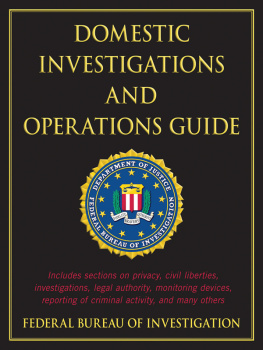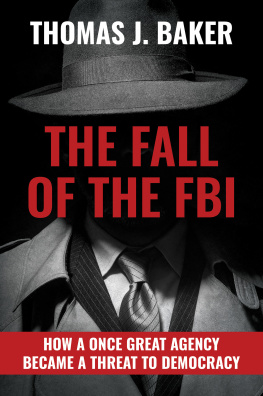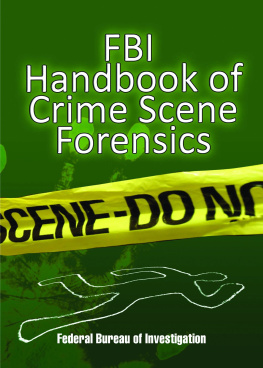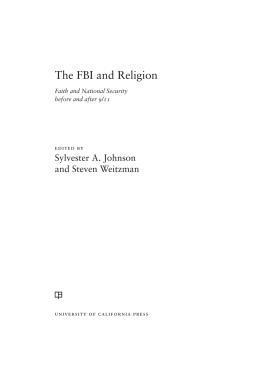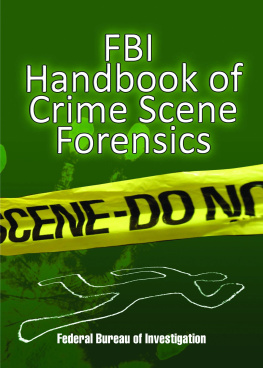2011
NATIONAL GANG THREAT ASSESSMENT
Emerging Trends
2011
NATIONAL GANG THREAT ASSESSMENT
Emerging Trends
2012 FBI . All rights reserved.
No part of this publication may be reproduced or transmitted in any form or by any means, mechanical or electronic, including photocopying and recording, or by any information storage and retrieval system, without permission in writing from author or publisher (except by a reviewer, who may quote brief passages and/or show brief video clips in a review).
Disclaimer: The Publisher and the Author make no representations or warranties with respect to the accuracy or completeness of the contents of this work and specifically disclaim all warranties, including without limitation warranties of fitness for a particular purpose. No warranty may be created or extended by sales or promotional materials. The advice and strategies contained herein may not be suitable for every situation. This work is sold with the understanding that the Publisher is not engaged in rendering legal, accounting, or other professional services. If professional assistance is required, the services of a competent professional person should be sought. Neither the Publisher nor the Author shall be liable for damages arising herefrom. The fact that an organization or website is referred to in this work as a citation and/or a potential source of further information does not mean that the Author or the Publisher endorses the information the organization or website may provide or recommendations it may make. Further, readers should be aware that internet websites listed in this work may have changed or disappeared between when this work was written and when it is read.
ISBN 978-1-61448-154-6 Paperback
ISBN 978-1-61448-155-3 eBook
SPECIAL THANKS TO THE NATIONAL DRUG INTELLIGENCE CENTER FOR THEIR CONTRIBUTIONS AND SUPPORT.
2011 National Gang Threat Assessment Emerging Trends
TABLE OF CONTENTS
Preface
The National Gang Intelligence Center (NGIC) prepared the 2011 National Gang Threat Assessment (NGTA) to examine emerging gang trends and threats posed by criminal gangs to communities throughout the United States. The 2011 NGTA enhances and builds on the gang-related trends and criminal threats identified in the 2009 assessment. It supports US Department of Justice strategic objectives 2.2 (to reduce the threat, incidence, and prevalence of violent crime) and 2.4 (to reduce the threat, trafficking, use, and related violence of illegal drugs). The assessment is based on federal, state, local, and tribal law enforcement and corrections agency intelligence, including information and data provided by the National Drug Intelligence Center (NDIC) and the National Gang Center. Additionally, this assessment is supplemented by information retrieved from open source documents and data collected through April 2011.
Scope and Methodology
In 2009, the NGIC released its second threat assessment on gang activity in the United States. The NGIC and its law enforcement partners documented increases in gang proliferation and migration nationwide and emerging threats. This report attempts to expand on these findings. Reporting and intelligence collected over the past two years have demonstrated increases in the number of gangs and gang members as law enforcement authorities nationwide continue to identify gang members and share information regarding these groups. Better reporting and collection has contributed greatly to the increased documentation and reporting of gang members and gang trends.
Information in the 2011 National Gang Threat Assessment-Emerging Trends was derived from law enforcement intelligence, open source information, and data collected from the NDIC, including the 2010 NDIC National Drug Threat Survey (NDTS). NGIC law enforcement partners provided information and guidance regarding new trends and intelligence through an online request for information via the NGIC Law Enforcement Online (LEO) Special Interest Group (SIG), which is now NGIC Online. Law enforcement agencies nationwide continuously report new and emerging gang trends to the NGIC, as the NGIC continues to operate as a repository and dissemination hub for gang intelligence. This information provided by our law enforcement partners was used to identify many of the trends and issues included in this report.
Reporting used to quantify the number of street and outlaw motorcycle gangs and gang members was primarily derived from the 2010 NDIC NDTS data and some supplemental NGIC reporting from our law enforcement partners. NDIC annually conducts the NDTS to collect data on the threat posed by various illicit drugs in the United States. A stratified random sample of nearly 3,500 state and local law enforcement agencies was surveyed to generate national, regional, and state estimates of various aspects of drug trafficking activities including the threat posed by various drugs, the availability and production of illicit drugs, as well as the role of street gangs and outlaw motorcycle gangs in drug trafficking activity. Weighted national, regional, and state-level statistical estimates derived from NDTS 2010 data was based on responses received from 2,963 law enforcement agencies out of a sample of 3,465 agencies. In calculating the number of street and outlaw motorcycle gang members, respondents in each region were asked to select from a series of ranges of numbers. The median numbers of each range were aggregated to generate an estimate for the total number of gang members. In calculating the number of street and outlaw motorcycle gangs, the low end of each range was aggregated to generate an estimate for the total number of gangs and gang members. Prison gang member estimates were derived directly from the US Federal Bureau of Prisons (BOP) and state correctional institutions across the country.
About the NGIC
The NGIC was established by Congress in 2005 to support law enforcement agencies through timely and accurate information sharing and strategic/tactical analysis of federal, state, and local law enforcement information focusing on the growth, migration, criminal activity, and association of gangs that pose a significant threat to communities throughout the United States. The NGIC is comprised of representatives from the Federal Bureau of Investigation (FBI), US Drug Enforcement Administration (DEA), US Bureau of Alcohol, Tobacco, Firearms, and Explosives (ATF), US Bureau of Prisons (BOP), United States Marshals Service (USMS), US Immigration and Customs Enforcement (ICE), US Department of Defense (DOD), National Drug Intelligence Center (NDIC), and US Customs and Border Protection (CBP). This multi-agency fusion center integrates gang intelligence assets to serve as a central intelligence resource for gang information and analytical support.
To assist in the sharing of gang intelligence with law enforcement, the NGIC has established NGIC Online, an information system comprised of a set of web-based tools designed for researching gang-related intelligence and sharing of information with federal, state, local and tribal law enforcement partners. The systems Request for Information (RFI) portal encourages users to contribute new data as well as conduct gang research through custom threat assessments and/or liaison with NGICs network of national subject matter experts. NGIC Online functions include RFI submissions and responses; Gang Encyclopedia WIKI; General Intelligence Library; and a Signs, Symbols, and Tattoos (SST) database with user submissions.



